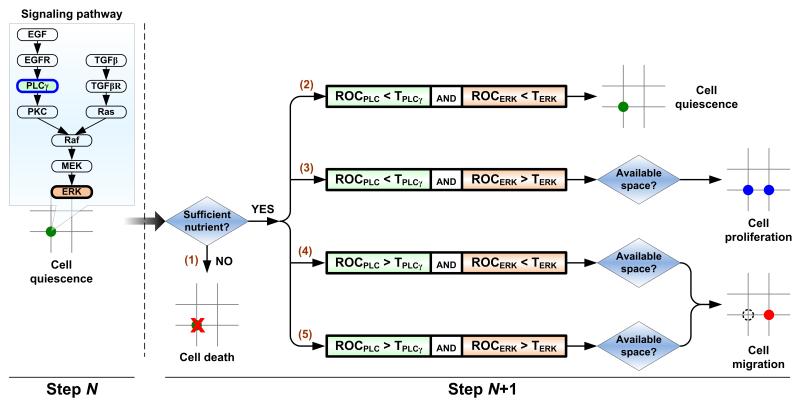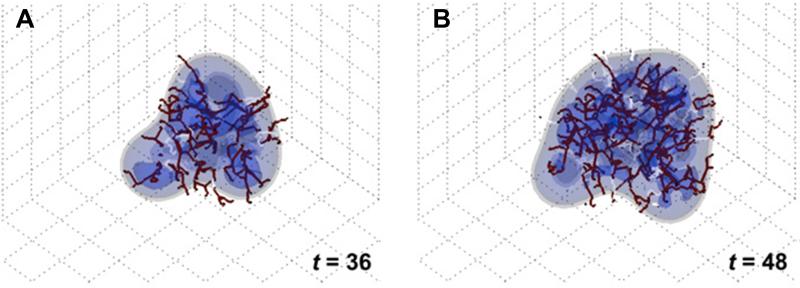Figure 2.
Cellular phenotypic decision algorithm. Decisions are made dependent of the molecular dynamics of PLCγ and ERK, two downstream signaling molecules of EGFR, for scenarios (2)-(5). Experimental studies have shown that the transient acceleration of accumulating PLCγ levels leads to cell migration [91], while that of ERK leads to cell replication [92]. Therefore, in our model, the rate of change of PLCγ determines the cellular migration decision, and the rate of change of ERK dictates the cellular proliferation fate. Beginning with a quiescent cancer cell at step N, its phenotype at step N+1 is determined as follows: (1) cell death if the on-site glucose level is insufficient; dependent on the molecular dynamics of PLCγ and ERK, (2) the cell will remain quiescent if the rate of change of both PLCγ and ERK remain below their corresponding thresholds; (3) the cell will proliferate (and a new cell will then occupy an adjacent free location) if only the rate of change of ERK exceeds its threshold; (4-5) the cell will migrate to the adjacent free location that has the greatest cue weight if the rate of change of PLCγ (regardless of ERK) exceeds its threshold.


